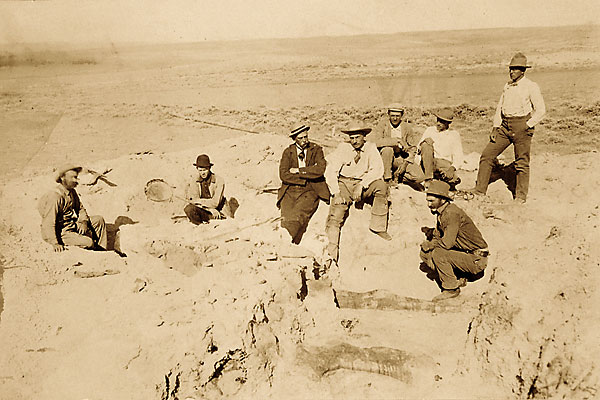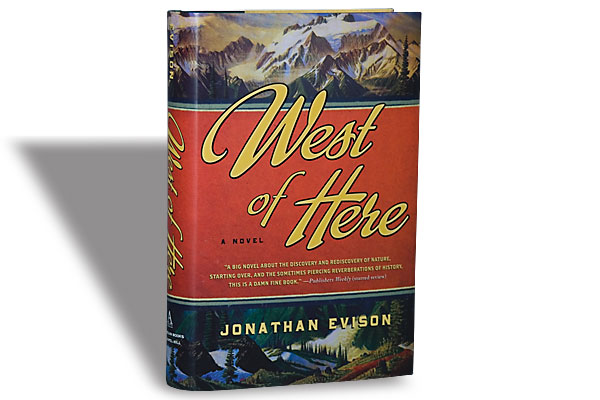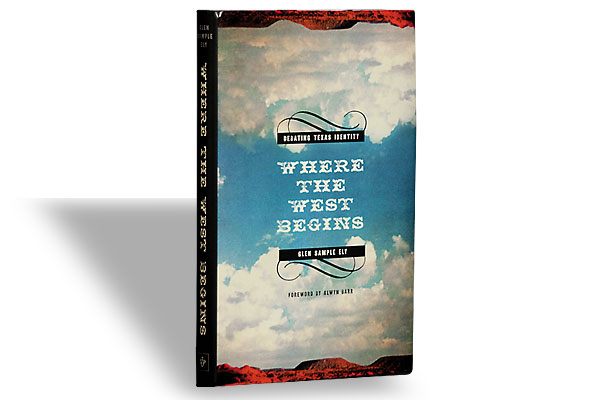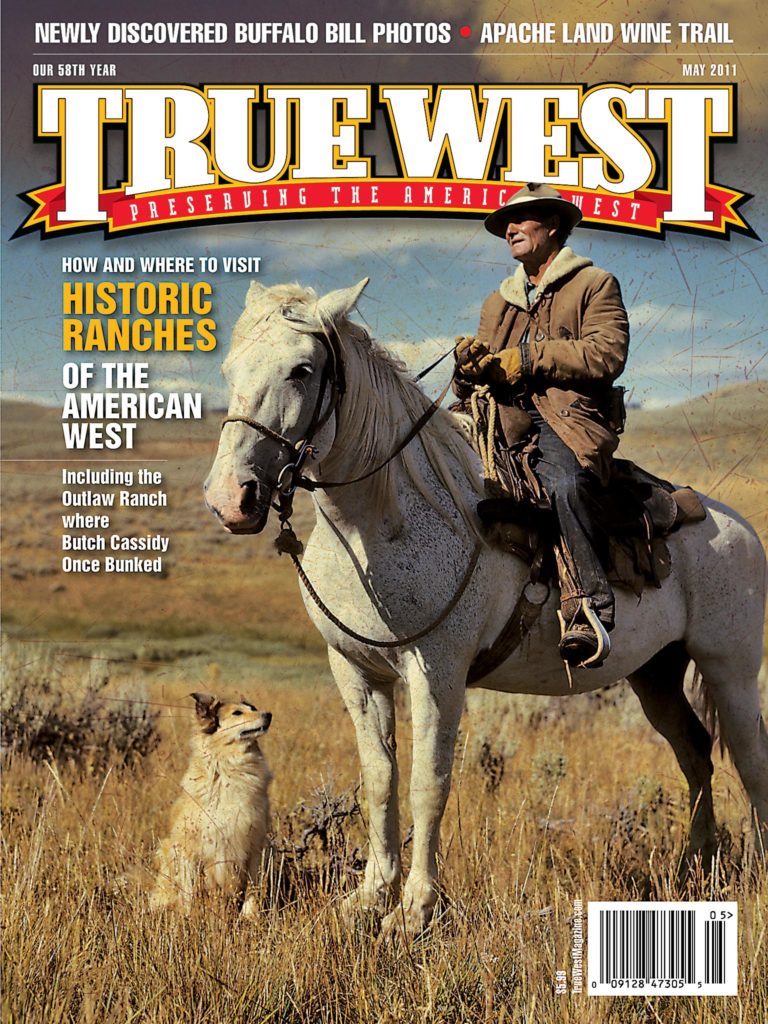 “Daddy, Daddy! Look! There are dinosaurs!”
“Daddy, Daddy! Look! There are dinosaurs!”
I could not keep myself from grinning when the little boy raced into the museum gallery in Bozeman, Montana. He was wide-eyed with wonder and wanted to share his discovery with a father who lagged a few steps behind. I’d been on the dinosaur trail myself, and the boy’s enthusiasm was just what I needed to continue my own quest for dinosaurs in the West.
The genesis of this Renegade Road trip was three years ago, when I worked on a project that involved filming some of the nation’s top paleontologists and scientists working in the field in Wyoming and Montana. I touched a 145-million-year-old bone of a sauropod; just a week later my friend (who had seen the dig site we filmed) took one of the paleontologists to a site where he had located an unusual outcrop—the skeleton of a dinosaur!
Wow! I was excited that even people who didn’t know what to look for could find a dinosaur. I did remember reading that many important discoveries across the West dated back to that period in the 19th century known as the “Dinosaur Wars,” when O.C. Marsh and Edward D. Cope first started crisscrossing the territory seeking specimens. These two scientists employed significant one-upmanship to find the most substantial specimens. Little did they realize that a century-and-a-half later scientists—and a few amateurs—would continue to discover new species of ancient animals.
So take a trip with me across the West to look for dinosaur tracks and fossils, as well as the remains of other prehistoric animals.
Life in the Past Lane
We’ll start in Lincoln, Nebraska, at the University of Nebraska State Museum’s special exhibit through September 30, 2011: “Highway Paleontology: Life in the Past Lane.” It features fossil finds gathered in Nebraska over the last 50 years, many of them discovered during work on state highway projects. Among the remains on display are a six-foot-tall flightless bird, a 40-foot-long plesiosaur, a giant land tortoise and a lion that is 25-percent larger than the modern African lion.
While not every highway project cuts through a fossil bed, in the past five decades, such work in Nebraska has produced more than 200,000 specimens, including the remains of a camel, rhinoceros, long-jawed elephant, giant land tortoise, large carnivore and sea lizard. The work has also led to discoveries of animals new to science, including the mouse species Stratimus strobeli, named in honor of former Nebraska Roads Department Director Jerry Strobel.
After a visit to the paleontology exhibit, you should hit the highway and head northwest to Ashfall Fossil Beds State Historical Park. The prehistoric animals found embedded here died from the ash fall of a volcano that erupted in Idaho some 12 million years ago, hence the name Ashfall Fossil Beds. Here are the skeletons of large animals like rhinos, camels and horses, and smaller animals like dogs. You’ll even find plant remains like grasses and seeds.
Another Nebraska stop on the Dinosaur Trail is at Agate Fossil Beds, south of Harrison. At Agate you’ll see both real or replica fossils found in the area, such as the “terrible pig” Dinohyus, the long necked, claw-toed Moropus, snarling beardogs and dwarf rhinos.
The trail then turns north, back through Crawford, before heading into South Dakota to Hot Springs. You should stop for a soak in the pools there before you vist the Mammoth Site with its 55 Columbian and Wooly Mammoth skeletons.
Continue your drive north through Custer State Park and take the time to visit the museum at the South Dakota School of Mines and Technology in Rapid City, which has rocks, minerals and fossil samples on display.
Next up, head through Belle Fourche, where Paleo Adventures offers dinosaur digs. Owner and professional dinosaur hunter Walter W. Stein tells us most of his visitors are surprised to learn that even a dinosaur digger tagged along during George A. Custer’s expedition into the Black Hills in 1874.
Montana’s Dinosaur Trail
Big Sky Country knows and celebrates its dinosaurs, and you can pick up a Dinosaur Passport at any of the Montana sites along its Dinosaur Trail to get stamped as you travel from place to place.
The Carter County Museum in Ekalaka houses one of the few nearly complete skeletons of Anatotitan copei, plus the complete skull of Triceratops horridus (three horns).
The Lakotas called the area around Glendive Makoshika “bad earth” or “bad land.” Perhaps they saw the remains of Tyrannasaurus rex and triceratops, which you can also see at Makoshika Dinosaur Museum in Glendive, a place that provides a really good rendition of what life may have been like during the age of the dinosaurs. It displays life-sized Allosaurus and Stegosaurus, Pterosaurs of all sizes, dinosaur skeletons, a T-Rex skull and many “fleshed-out” dinosaur sculptures. The nearby Makoshika State Park lets you explore the land of the dinosaurs on your own.
Of the 15 major sites on the Montana Dinosaur Trail, I highly recommend you head northwest to Highway 2 for visits to the Fort Peck Interpretive Center and Museum, with one of the most complete T-Rex skeletons in the country.
In Malta, the Great Plains Dinosaur Museum and Field Station offers one of the best displays of real bones and real history in the region, with examples of rare fossil fish, invertebrates, plants and a variety of dinosaur species, including Stegosaurus and Triceratops. The Guinness World Records recognizes Hadrosaur “Leonardo” as the “best preserved” dinosaur. You and the kids can get in on some of the action in the museum’s junior paleontologist program and summer field digs.
Two Medicine Dinosaur Center near Bynum also offers field digs for children and adults. This is a great center for exploration. Operated by Dave Trexler, Two Medicine has displays of dinosaur species found in the area, a lab where visitors can actually do hands-on work to preserve dinosaur bones and a field site where you can dig.
Dave’s mother Marian found her first dinosaur in 1917 when she was only five years old, but she made her most significant discovery in 1978 when she found the first baby duckbill bones ever located. Dave found an articulated portion of a dinosaur in 1971, at a time when the only displayed dinosaur in Montana was in Ekalaka. He and his mother took the bones they found and created their own museum, which has evolved into the Two Medicine Dinosaur Center. (Some of the early discoveries they made are on display in nearby Choteau.)
Dave and his mother often scoured the ranch land along the Rocky Mountain Front, looking for dinosaur relics. She had a habit of saying, “I’ll meet you back at the car,” he remembers.
When she did not return to the vehicle one day in 1978, he went in search of her and found her sitting down. “Look what I found,” she said as she held up a “little duckbill vertebra,” Dave recalls.
The Trexlers found other bones of that baby duckbill and others of the same species. When scientists Jack Horner and Bob Makala came to view them and determined that they were indeed baby dinosaurs, the discovery sent shockwaves through the paleontological world. Although the duckbill classification came later, Marian’s find “changed the way the entire world views dinosaurs,” Dave says. At that time, he says, “there was no baby dinosaur in a museum anywhere in the world.”
You may ask: Which came first, the dinosaur or the dinosaur egg? I can’t answer that question but another one of Montana’s greatest dinosaur discoveries, Egg Mountain, is found less than three-quarters of a mile from where Marian Trexler found the remains of the baby duckbill dinosaur. Egg Mountain has the highest concentration of dinosaur eggs found in the world, marking the site as one of the most significant paleontological discoveries of the 20th century.
At the Old Trail Museum in Choteau, I viewed some of the eggs from Egg Mountain (others are located in different museums in Montana). They include troodon eggs with their smooth shells, plus bumpy shelled eggs from an unknown species of dinosaurs.
Many species of dinosaur, and their actual bones, are on display at the Museum of the Rockies in Bozeman, the place where the young boy showed his excitement when he first saw them.
The Siebel Dinosaur Complex at the Museum of the Rockies takes you right into the Jurassic era and gives you a chance to see some of the world’s rarest fossils. The museum was designed by Dr. Jack Horner, the world-renowned dinosaur paleontologist and advisor to the Jurassic Park films. (Yep, this is the same Jack Horner who recognized the significance of Marian Trexler’s discovery at Bynum.)
The above are the best of Montana’s dinosaur sites. Now it’s time to head south toward Utah, where no less than eight species of dinosaurs were named in 2010!
New Finds in Utah
The oldest reported raptor-like dinosaur was discovered last year near Green River, Utah. Believed to be 125 million years old, Geminiraptor suarezarum, found on federal land, is about 50 million years older than any other known raptor in the dinosaur field. The bones of this species are being curated at the College of Eastern Utah’s Prehistoric Museum in Price.
Among other recent discoveries in Utah are a new species of birdlike dinosaur that resembled a seven-foot-tall brightly colored turkey, found in Grand Staircase-Escalante National Monument in southern Utah. Utahceratops gettyi and Kosmoceratops richardsoni are two new dinosaurs discovered in the same region. Diggers also found a meat-eating tyrannosaur, a duckbilled dinosaur with a seven-foot-long head and a horned dinosaur.
Another new discovery is the Seitaad ruessi, which is named after a sand-desert monster that swallowed its victims in sand dunes and Everett Ruess, a famous young artist who disappeared in southern Utah during the 1930s. This particular animal is one of Utah’s oldest known dinosaurs.
Hippodraco and Iguanacolossus are two new iguanadontid dinosaurs that were located near Moab on Bureau of Land Management lands.
Like Montana, Utah has many dinosaur sites worth visiting, including the St. George Dinosaur Discovery Site at Johnson Farm, the North American Museum of Ancient Life at Thanksgiving Point in Lehi, the Prehistoric Museum in Price, the Cleveland-Lloyd Dinosaur Quarry south of Price (with a display showing the excavation history of the site, a fossil preparation table, replica skulls of animals found in the quarry and a mounted Allosaurus skeleton) and the Utah Field House of Natural History State Park Museum in Vernal.
Plus, the new Utah Natural History Museum, opening this October at the University of Utah Rio Tinto Center, will have a stunning dinosaur exhibit.
Colorado’s Mammoths and Mastodons
Dinosaur National Monument straddles the Utah-Colorado border, but the quarry there is currently closed, making it impossible to see the best views of dinosaur fossils at the site. To get around that blockage, I recommend traveling east on U.S. 40 to Denver and its Denver Museum of Nature and Science. The venerable institution got a windfall in discovery items in 2010 when a bulldozer operator working on the expansion of Zeigler Reservoir for the Snowmass Water and Sanitation District uncovered a significant Columbian mammoth fossil site near Snowmass Village at Vail. Further excavation resulted in mastodon remains.
Snowmass is the first Colorado location that has both mammoth and mastodon fossils in one place, and it includes what appears to be the most complete mammoth fossil found at high elevation (8,960 feet) in Colorado. Early analysis shows that these fossils date to the end of the last Ice Age, approximately 12,000 to 16,000 years ago.
“One of the great things about living in the American West is that amazing fossils can be found in all sorts of places. The Snowmass mammoth is a perfect example of how alert workers can make discoveries that have great significance,” says Kirk Johnson, the Denver Museum of Nature and Science’s chief curator and vice president of research and collections.
Dino Home
Now it’s time to head to Wyoming to see the newly renovated Anthropology Museum at the University of Wyoming in Laramie. You should continue west out of Laramie on U.S. 30 through Como Bluff for a close-up look at the house made of dinosaur bones and fossil remains from the nearby geological area that was first explored by O.C. Marsh back in the 1870s. Travel on through Medicine Bow and north on U.S. 287 and Highway 220, and you will reach Casper and the Tate Museum with its own dino exhibits.
Leaving Casper, you should drive west on U.S. 20-26 to Shoshoni, then north on U.S. 20 to the Dinosaur Discovery Center in Thermopolis, which has displays and offers tours to a nearby dig site.
Another half hour’s drive north takes you to the Washakie Museum and Cultural Center in Worland, which will bring you full circle in this story. The center, which opened in 2010, has multiple paleontological exhibits, including one related to the discovery of the Colby Mammoth Site (just east of Worland), another about the discovery of Deinonychus (a small dinosaur named thus for its “terrible claw”) and a film that features the scientists and paleontologists I was fortunate to work with in the production of “Why We Dig.”
That film took me to dinosaur and fossil sites across the Big Horn Basin in both Wyoming and southern Montana, which allowed me to see and touch ancient bones and fossils, and to walk in dinosaur tracks, which led my friend to realize the strange outcrop he had seen on one of his hikes was a dinosaur!
Because of the film project, he knew a scientist who would recognize it. After an excavation, the find was identified as a Tenontosaurus. To me it is just like the dinosaur Dave and his mother Marian found.





